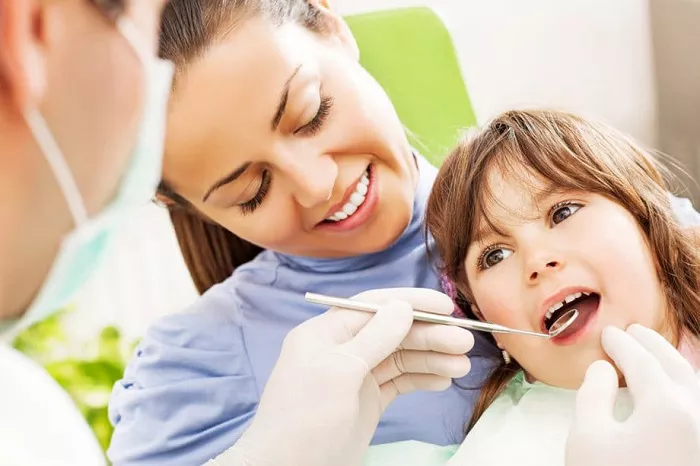Pediatric dentistry focuses on the oral health of children from infancy through adolescence. It requires a unique set of skills and knowledge due to the specific physical, psychological, and behavioral characteristics of young patients. The question of whether a general dentist can engage in pediatric dentistry is of significance as it impacts access to dental care for children and the scope of practice within the dental field. General dentists are trained to provide a wide range of dental services to patients of all ages, but pediatric dentistry presents some distinct demands.
Similarities in Training and Skills
Basic Dental Knowledge
General dentists and pediatric dentists both possess a foundation in dental anatomy, physiology, and pathology. They are trained to diagnose and treat common dental conditions such as cavities, gum diseases, and dental trauma. For example, a general dentist is well-versed in identifying a carious lesion in a child’s tooth and understanding the appropriate restorative procedures, which is similar to what a pediatric dentist would do in such a situation.
Clinical Skills
Both types of dentists have skills in performing dental procedures like fillings, extractions (in certain cases), and preventive measures such as fluoride applications and sealants. A general dentist can effectively place a sealant on a child’s permanent molars to prevent decay, just as a pediatric dentist would. They also have the ability to take accurate dental radiographs, which is essential for proper diagnosis in both adult and pediatric dentistry.
Differences and Challenges in Pediatric Dentistry
Behavioral Management
Children’s Fear and Anxiety
Children are more likely to experience fear and anxiety in the dental setting compared to adults. A pediatric dentist is trained in specific behavior management techniques such as tell-show-do, positive reinforcement, and distraction methods.
While a general dentist may have some understanding of these concepts, they may not have the same level of expertise. For instance, a pediatric dentist might use a puppet to explain a dental procedure to a young child, making it less intimidating, whereas a general dentist might not be as well-equipped in such creative behavior management strategies.
Limited Cooperation
Young children may have difficulty sitting still and cooperating during a dental visit. Pediatric dentists are experienced in handling such situations and may have access to specialized equipment like child-sized dental chairs and restraints (used in a safe and ethical manner). General dentists may face more challenges in ensuring a child’s cooperation throughout a procedure.
Growth and Development Considerations
Primary and Permanent Teeth Differences
Pediatric dentists have in-depth knowledge about the unique characteristics of primary teeth, such as their thinner enamel and larger pulp chambers. They understand the different eruption patterns and the importance of maintaining the integrity of primary teeth as they serve as placeholders for permanent teeth. General dentists need to be more aware of these differences to provide appropriate care. For example, when treating a cavity in a primary tooth, the approach might be different from that of a permanent tooth due to its anatomical and developmental features.
Orthodontic Evaluation
Pediatric dentists are often involved in early orthodontic evaluations and interceptive orthodontics. They can identify potential orthodontic problems at an early stage, such as crowding or malocclusions, and provide appropriate referrals or initial treatments. General dentists may not have the same level of training in this aspect and might miss some early signs of orthodontic issues.
Specialized Knowledge in Pediatric Oral Diseases
Some pediatric oral diseases, such as early childhood caries (ECC) and its severe form, nursing bottle caries, require specific understanding and management strategies. Pediatric dentists are more familiar with the risk factors, preventive measures, and treatment modalities for these conditions. General dentists need to enhance their knowledge in this area to effectively treat children with such diseases.
Strategies for General Dentists in Pediatric Dentistry
Continuing Education
General dentists can participate in pediatric dentistry continuing education courses. These courses can cover topics like advanced behavior management techniques, updated knowledge on primary teeth care, and the latest in pediatric oral disease management. By attending such courses, general dentists can enhance their skills and knowledge to better serve pediatric patients.
Team Building
Employing a dental team with experience in working with children can be beneficial. Dental assistants who are trained in handling children can assist in making the dental visit more pleasant for the child. They can help with distraction techniques and ensuring the child’s comfort during the procedure.
Referral Networks
Establishing a good referral network with pediatric dentists is essential. When a case is too complex or requires specialized pediatric dental knowledge or procedures, a general dentist can refer the patient to a pediatric dentist. At the same time, they can also receive referrals from pediatric dentists for cases that fall within their scope of practice, such as routine dental cleanings and simple restorations for older children.
Conclusion
While a general dentist has a certain level of training and skills that can be applied to pediatric dentistry, there are significant differences and challenges in providing comprehensive care to children. However, with appropriate continuing education, team building, and a well-functioning referral network, a general dentist can play an important role in pediatric dental care. It is crucial for general dentists to be aware of their limitations and continuously strive to improve their knowledge and skills in this area to ensure the best possible oral health outcomes for pediatric patients. By doing so, they can contribute to filling the gap in access to dental care for children and provide a valuable service within the community.

